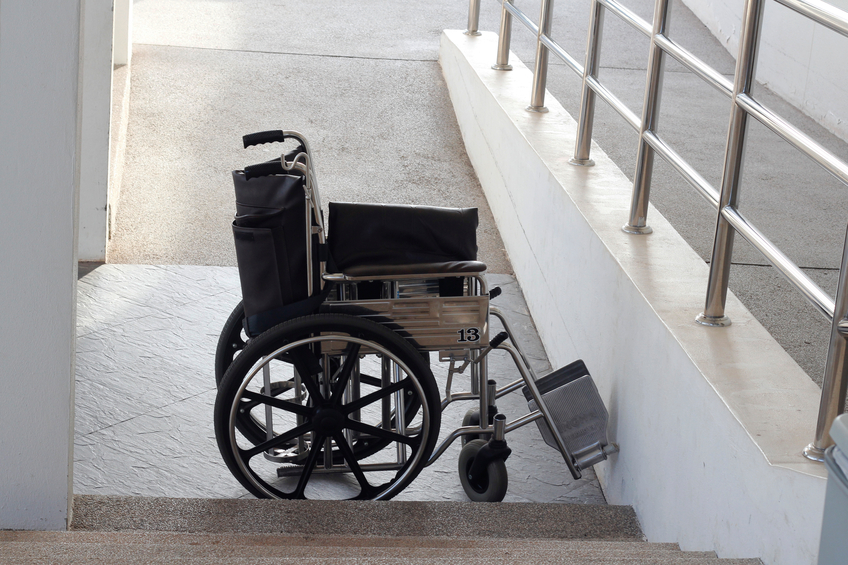Tennessee Energy Efficiency & Health/Safety/Welfare 24 PDH Discount Pkg 1
Courses in this Package
Continuous Energy Improvement in Motor Driven Systems (E08-007)
Advancing Systems and Technologies to Produce Cleaner Fuels (P03-003)
Americans with Disabilities Act (ADA) Overview (A02-005)
Plumbing Guidelines for ADA Accessibility (M02-056)
Accessible Routes for ADA Accessibility (A02-012)
ADA Requirements for the Design of Parking Spaces (A01-003)
ADA Update: A Primer for Small Business (A01-004)
Safety and Health Programs in Construction (C03-062)
Ethics Guidelines for Professional Conduct (LE2-013)

This online engineering PDH course presents the fundamental information and necessary guidance required to assist the Manufacturing and Process industries in optimizing their electric motor driven systems which leads to substantial energy / cost savings.
Electric motors are among the least well-managed industrial equipment, even though motor-driven equipment accounts for approximately 70% of the electrical energy consumed by process industries and approximately 90% for electrical intensive industries. Motors that are not properly managed can result in billions of dollars in wasted energy and operating costs to an industry.
A detailed analysis of the U.S. motor systems inventory indicates that this energy use could be reduced by 11% to 18% if plant managers implement all cost-effective applications of mature and proven energy efficiency technologies and practices. It is worth noting that the suggested improvements are not necessarily limited to the U.S., but can be implemented in any industry around the world that utilizes motor driven systems.
This 8 PDH online course is applicable to electrical, mechanical, and industrial engineers as well as other technical personnel interested in learning more about improving the operation of motor driven systems.
This PE continuing education course is intended to provide you with the following specific knowledge and skills:
- Familiarizing with motor energy management and best practices
- Understanding the different types of utility charges
- Learning about the steps involved in conducting a motor survey
- Familiarizing with motor specification and selection considerations
- Estimating motor load and efficiency
- Analyzing motor efficiency opportunities
- Conducting plans for improving motor efficiency
- Familiarizing with the opportunities to improve system efficiencies
- Understanding the importance and practicality of power factor correction
Upon successful completion of the quiz, print your Certificate of Completion instantly. (Note: if you are paying by check or money order, you will be able to print it after we receive your payment.) For your convenience, we will also email it to you. Please note that you can log in to your account at any time to access and print your Certificate of Completion.

This online engineering PDH course provides information on advancements made in systems and technologies related to oil and natural gas development to produce cleaner fuels. It pays special attention to advancements aimed at reducing the environmental impact associated with the production of oil and natural gas. It also discusses the safety conditions for those involved in the development process.
Fossil fuel resources account for 82% of total U.S. primary energy use because they are abundant, have a relatively low cost of production, and have a high energy density—enabling easy transport and storage. The infrastructure built over decades to supply fossil fuels is the world’s largest enterprise with the largest market capitalization. Of fossil fuels, oil and natural gas make up 63% of energy usage. Across the energy economy, the source and mix of fuels used across these sectors is changing, particularly the rapid increase in natural gas production from unconventional resources for electricity generation and the rapid increase in domestic production of shale oil. The United States will, for the foreseeable future, continue to rely heavily upon oil and natural gas to support its economy, national security, and energy security.
This 3 PDH online course is applicable to petroleum, chemical, mechanical and sustainability engineers and other technical personnel who are interested in learning more about the trends in advancing oil and gas development systems and technologies.
This PE continuing education course is intended to provide you with the following specific knowledge and skills:
- Understanding the Oil and Gas industry in the Energy Economy of the United States
- Familiarizing with the latest technological advancements in Oil and Gas
- Learning about the emerging research opportunities and the four themes to address R&D challenges
- Learning the about the Oil and Gas challenges through specific technology assessments
- Understanding the risks associated with the various aspects of oil and natural gas development
- Learning from past oil and natural gas development mistakes and disasters to ensure they are not repeated
Upon successful completion of the quiz, print your Certificate of Completion instantly. (Note: if you are paying by check or money order, you will be able to print it after we receive your payment.) For your convenience, we will also email it to you. Please note that you can log in to your account at any time to access and print your Certificate of Completion.

This online engineering PDH course provides an overview of the Americans with Disabilities Act as it applies to facility design.
For individuals with disabilities, the Americans with Disabilities Act gives civil rights protections similar to those provided to individuals on the basis of race, color, sex, national origin, age, and religion. It guarantees equal opportunity for individuals with disabilities in public accommodations, employment, transportation, state and local government services, and telecommunications.
This 2 PDH online course is intended for all engineers involved in the design of facilities accessible to the public and regulated by the
This PE continuing education course is intended to provide you with the following specific knowledge and skills:
- Familiarizing with the types of facilities covered
- Understanding "public accommodation"
- Learning about the various requirements for accessible facilities
- Understanding when a "direct threat" to health or safety is present
- Understanding "readily achievable" barrier removal for existing facilities
- Familiarizing with the legal enforcement mechanisms available
- Learning about available tax credits and deductions for employers
In this professional engineering CEU course, you need to review the course document titled, "American with Disabilities Act (ADA) Overview" which is based on the original document (http://www.ada.gov/qandaeng.htm) published by the U.S. Equal Employment Opportunity Commission of the Civil Rights Division of the U.S. Department of Justice (DOJ), last updated on
Upon successful completion of the quiz, print your Certificate of Completion instantly. (Note: if you are paying by check or money order, you will be able to print it after we receive your payment.) For your convenience, we will also email it to you. Please note that you can log in to your account at any time to access and print your Certificate of Completion.

This online engineering PDH course focuses on the plumbing elements and facilities of the 2010 ADA standards for accessible design.
The Department of Justice published revised regulations for Titles II and III of the Americans with Disabilities Act of 1990 "ADA" in the Federal Register on September 15, 2010. These regulations adopted revised, enforceable accessibility standards called the 2010 ADA Standards for Accessible Design "2010 Standards" or "Standards". The 2010 Standards set minimum requirements – both scoping and technical – for newly designed and constructed or altered State and local government facilities, public accommodations, and commercial facilities to be readily accessible to and usable by individuals with disabilities.
This 2 PDH online course is applicable to mechanical and civil engineers, architects, construction managers and others interested in learning more about plumbing guidelines for ADA accessibility.
This PE continuing education course is intended to provide you with the following specific knowledge and skills:
- Learning about the drinking fountain ADA requirements
- Learning about the coat hooks and shelves ADA requirements
- Learning about the water closet ADA requirements
- Learning about the urinal ADA requirements
- Learning about the shower stall ADA requirements
- Learning about the washing machine and dryers ADA requirements
- Learning about the saunas and steam rooms ADA requirements
In this professional engineering CEU course, you need to review “Plumbing Guidelines for ADA Accessibility”, which is based on Chapter 6 “Plumbing Elements and Facilities” of the 2010 ADA standards for accessible design.
Upon successful completion of the quiz, print your Certificate of Completion instantly. (Note: if you are paying by check or money order, you will be able to print it after we receive your payment.) For your convenience, we will also email it to you. Please note that you can log in to your account at any time to access and print your Certificate of Completion.

This online engineering PDH course focuses on the Accessible Routes of the 2010 ADA standards for accessible design.
The Department of Justice published revised regulations for Titles II and III of the Americans with Disabilities Act of 1990 "ADA" in the Federal Register on September 15, 2010. These regulations adopted revised, enforceable accessibility standards called the 2010 ADA Standards for Accessible Design "2010 Standards" or "Standards". The 2010 Standards set minimum requirements – both scoping and technical – for newly designed and constructed or altered State and local government facilities, public accommodations, and commercial facilities to be readily accessible to and usable by individuals with disabilities.
This 2 PDH online course is applicable to all engineers, architects, construction managers and others interested in learning more about accessible routes for ADA accessibility.
This PE continuing education course is intended to provide you with the following specific knowledge and skills:
- Learning about the ADA requirements of accessible routes for walking surfaces
- Learning about the ADA requirements of accessible routes for doors, doorways and gates
- Learning about the ADA requirements of accessible routes for ramps and curb ramps
- Learning about the ADA requirements of accessible routes for elevators and elevator car
- Learning about the ADA requirements of accessible routes for platform lifts
Upon successful completion of the quiz, print your Certificate of Completion instantly. (Note: if you are paying by check or money order, you will be able to print it after we receive your payment.) For your convenience, we will also email it to you. Please note that you can log in to your account at any time to access and print your Certificate of Completion.

This online engineering PDH course provides detailed information on designing accessible parking spaces that meet the requirements of the Americans with Disabilities Act as defined by the 2010 ADA Standards for Accessible Design.
Both vans and cars are considered. Dimensions, distribution, location, connections to access routes (to accessible entrances to buildings), and minimum number of spaces are all described. Special requirements for making temporary events (such as street festivals, craft fairs, musical performances, sporting events and home shows) accessible are also presented.
This 1 PDH online course is intended primarily for civil engineers involved in the design of parking spaces that meet ADA standards.
This PE continuing education course is intended to provide you with the following specific knowledge and skills:
- Understanding the minimum number of accessible parking spaces
- Understanding the number of van accessible spaces relative to accessible spaces
- Learning about the location and distribution of parking spaces
- Learning about aisle width, vertical clearance, and signage for van accessible parking spaces
- Understanding the relation of access aisle to accessible route
- Knowing the requirements for access route
- Learning about temporary accessible parking spaces
- Dealing with problem curb ramps
In this professional engineering CEU course, you need to review the course document titled, “ADA Requirements for the Design of Parking Spaces” which is based on a compilation of two ADA documents: “Accessible Parking,” developed by the Mid-Atlantic ADA Center, 2014, and “A Planning Guide for Making Temporary Events Accessible to People with Disabilities,” ADA National Network, 2015.
Upon successful completion of the quiz, print your Certificate of Completion instantly. (Note: if you are paying by check or money order, you will be able to print it after we receive your payment.) For your convenience, we will also email it to you. Please note that you can log in to your account at any time to access and print your Certificate of Completion.

This online engineering PDH course provides general guidance to help business owners understand how to comply with the Department of Justice’s Americans with Disability Act (ADA) and the 2010 Standards, the design standards for accessible buildings.
The ADA applies to both the built environment and to policies and procedures that affect how a business provides goods and services to its customers. Using this guidance, small business owners or managers can ensure that they will not unintentionally exclude people with disabilities and will know when they need to remove barriers in existing facilities.
This 1 PDH online course is intended for engineers involved in the planning, design or operation of a small business.
This PE continuing education course is intended to provide you with the following specific knowledge and skills:
- Understanding who is covered by the ADA
- Understanding the general non-discrimination requirements
- Learning how to make the built environment accessible
- Knowing how to assess a facility
- Training staff on ADA requirements
In this professional engineering CEU course, you need to review the course document titled, “ADA Update: A Primer for Small Business,” March, 2011.
Once you complete your course review, you need to take a multiple-choice quiz consisting of ten (10) questions to earn 1 PDH credit. The quiz will be based on this ADA publication.
Upon successful completion of the quiz, print your Certificate of Completion instantly. (Note: if you are paying by check or money order, you will be able to print it after we receive your payment.) For your convenience, we will also email it to you. Please note that you can log in to your account at any time to access and print your Certificate of Completion.

This online engineering PDH course provides responsible employers, workers, and worker representatives with a sound, flexible framework for addressing safety and health issues on diverse construction job sites.
This course follows a proactive approach to managing occupational safety and health rather than a traditional approach where actions are taken only after a worker is injured or becomes sick. Finding and fixing hazards before they cause injury or illness is a far more effective approach. Doing so avoids the direct and indirect costs of worker injuries and illnesses and promotes a positive work environment.
Employers will find that implementing the recommended practices highlighted in this course will bring other benefits as well such as improvements in production/quality, better employee morale, improved employee recruiting and retention, and a more favorable image and reputation among customers, suppliers, and the community.
This 3 PDH online course is applicable to health and safety engineers, construction and project managers, site engineers, and anyone who is interested in improving the standard and level of health and safety on construction sites.
This PE continuing education course is intended to provide you with the following specific knowledge and skills:
- Understanding the seven core elements of the recommended practices for safety and health programs in construction
- Learning about the importance of effective management leadership
- Understanding how to promote worker participation
- Familiarizing with hazard identification and assessment
- Learning about hazard prevention and control
- Familiarizing with the education and training mindset required on site
- Gaining insight on evaluation and improvement programs
- Understanding the importance of communication and coordination for employers on multiemployer worksites
Upon successful completion of the quiz, print your Certificate of Completion instantly. (Note: if you are paying by check or money order, you will be able to print it after we receive your payment.) For your convenience, we will also email it to you. Please note that you can log in to your account at any time to access and print your Certificate of Completion.

This online engineering PDH course presents ethics guidelines for engineers. The guidelines have been developed for everyday use by engineers as they encounter common situations in their jobs. The course is based on an ASCE document adapted from a standards-of-business-conduct document developed by a private company. Thus the course is useful not only to civil engineers but also to engineers in other fields.
This 2 PDH online course is intended for all engineers who are interested in gaining a better understanding about how to protect and respect their engineering profession in the utmost manner.
This PE continuing education course is intended to provide you with the following specific knowledge and skills:
-
Understanding precise definitions of key terms such as "conflict of interest", "whistleblowing" and "confidential and proprietary information"
-
Understanding the fifteen guidelines for professional conduct, including for example relations to clients, obligations to the public, outside employment, bribes and kickbacks, gifts, and harassment
-
Understanding the ethical decision-making process based on 1) policies (of the employer or other relevant organization), 2) the law, 3) universally recognized values, and 4) the engineer's personal values
In this online engineering PDH course, you need to review the course document "Ethics Guidelines for Professional Conduct" published by the American Society of Civil Engineers (ASCE) on January 2008. This course document is reproduced by permission of the ASCE (www.asce.org), and may be downloaded from the ASCE's website by clicking on Ethics Guidelines for Professional Conduct, or by clicking on the link below.
Once you complete your course review, you need to take a multiple-choice quiz consisting of fifteen (15) questions to earn 2 PDH credits. The quiz will be based on this ASCE publication.
Upon successful completion of the quiz, print your Certificate of Completion instantly. (Note: if you are paying by check or money order, you will be able to print it after we receive your payment.) For your convenience, we will also email it to you. Please note that you can log in to your account at any time to access and print your Certificate of Completion.